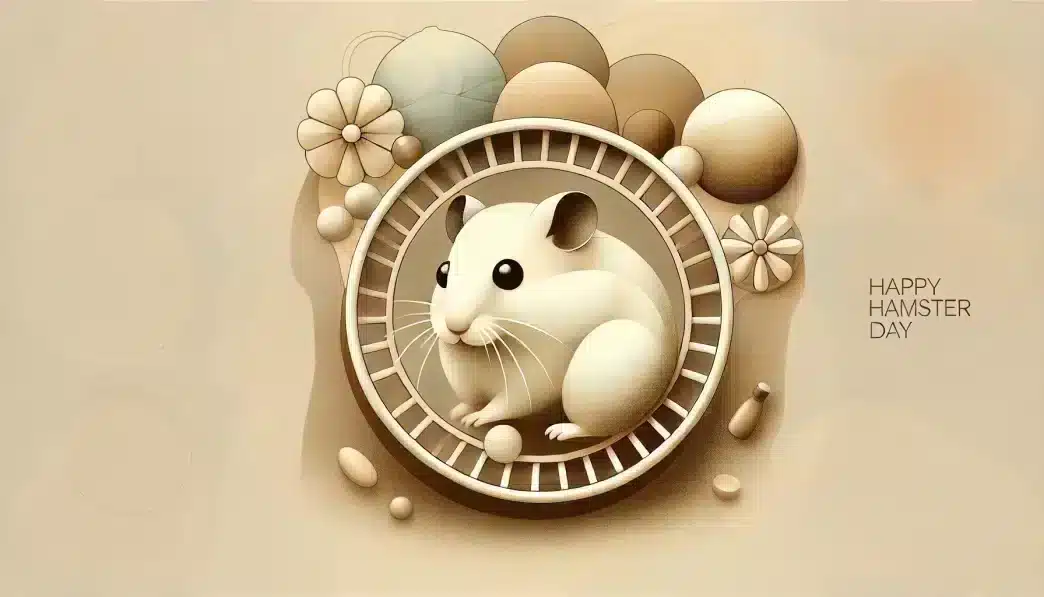What is World Hamster Day?
World Hamster Day is celebrated annually on April 12 to honor these small, charming rodents that have become beloved pets worldwide. The day encourages hamster owners and animal lovers to appreciate their furry companions, learn more about their care, and promote responsible pet ownership.
Hamsters have been popular pets for decades due to their playful nature, compact size, and relatively simple care requirements. World Hamster Day provides an opportunity to highlight the importance of proper nutrition, exercise, and habitat enrichment to ensure the well-being of these tiny creatures.
History and Origin
World Hamster Day is observed on April 12 in recognition of the day in 1930 when zoologist Israel Aharoni led an expedition near Aleppo, Syria, and discovered a female Syrian hamster with her litter. This discovery led to the domestication of Syrian hamsters, which are now among the most common pet hamster species.
Hamsters were first bred in captivity and later introduced as pets worldwide. Their popularity grew rapidly due to their adaptability, cute appearance, and entertaining behaviors. Today, various hamster species, including Syrian, Roborovski, and Dwarf hamsters, are kept as pets in households across the globe.
Who Observes World Hamster Day?
- Pet owners who cherish their hamster companions.
- Animal welfare organizations promoting proper hamster care and adoption.
- Educational institutions teaching students about small mammals and responsible pet ownership.
- Veterinary clinics offering information on hamster health and wellness.
- Pet enthusiasts sharing their love for hamsters through events and social media.
Slogans and Themes
World Hamster Day focuses on appreciation, education, and responsible pet ownership. The day highlights the importance of treating hamsters with care and ensuring they have a safe and stimulating environment. Common slogans include “Celebrate Your Furry Friend,” “Hamsters: Small Pets, Big Hearts,” and “Caring for Our Tiny Companions.”
Colors, Symbols, and Patterns
Colors
- Brown represents the natural fur color of many hamster species.
- White symbolizes purity and the domesticated varieties of hamsters.
- Yellow reflects the playful and energetic nature of hamsters.
Symbols
- A hamster wheel signifies the active lifestyle of these small pets.
- A sunflower seed represents a common treat enjoyed by hamsters.
- A cozy nest symbolizes the importance of a comfortable habitat for hamsters.
Patterns
- Cheek pouch motifs highlight the unique ability of hamsters to store food.
- Maze designs reflect the curiosity and exploratory behavior of hamsters.
- Footprint trails illustrate the small yet significant presence of hamsters in our lives.
How to Observe World Hamster Day
- Enhance your hamster’s habitat by adding new toys, tunnels, or bedding to enrich their environment.
- Learn about different hamster species and their natural behaviors to better understand your pet.
- Share photos and stories of your hamster on social media using official hashtags to connect with other enthusiasts.
- Support local animal shelters by donating supplies or funds to assist in the care of small pets.
- Educate others about responsible hamster care, including proper diet, habitat maintenance, and health monitoring.
Most Used Hashtags
- #WorldHamsterDay
- #HamsterLove
- #HamsterCare
- #HamsterLife
- #HamsterAppreciation
Why is World Hamster Day Important?
World Hamster Day highlights the joy and companionship that hamsters bring into the lives of their owners. It serves as a reminder of the importance of responsible pet ownership and the need to provide proper care for these small animals. The day also raises awareness about the specific needs of hamsters and encourages pet owners to create safe and stimulating environments for them.
By celebrating World Hamster Day, people can recognize the unique qualities of hamsters, share their experiences, and promote ethical hamster care. Whether through educational efforts, social media campaigns, or simply spending quality time with a pet hamster, the day encourages greater appreciation for these fascinating little creatures.
Features
- Animals
